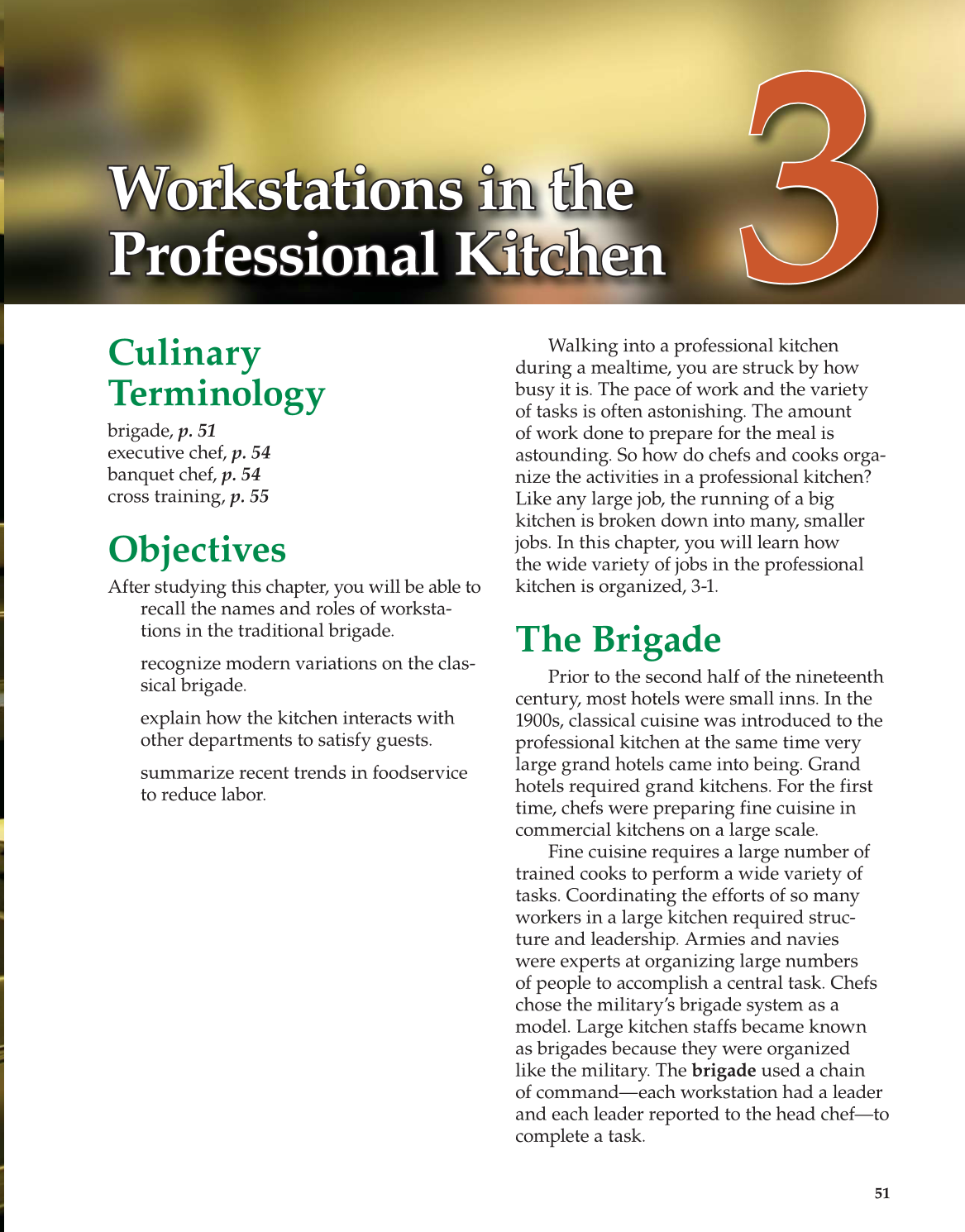51
3 3
Workstations in the Workstations in the
Professional Kitchen Professional Kitchen
Culinary
Terminology
brigade, p. 51
executive chef, p. 54
banquet chef, p. 54
cross training, p. 55
Objectives
After studying this chapter, you will be able to
recall the names and roles of worksta-
tions in the traditional brigade.
recognize modern variations on the clas-
sical brigade.
explain how the kitchen interacts with
other departments to satisfy guests.
summarize recent trends in foodservice
to reduce labor.
Walking into a professional kitchen
during a mealtime, you are struck by how
busy it is. The pace of work and the variety
of tasks is often astonishing. The amount
of work done to prepare for the meal is
astounding. So how do chefs and cooks orga-
nize the activities in a professional kitchen?
Like any large job, the running of a big
kitchen is broken down into many, smaller
jobs. In this chapter, you will learn how
the wide variety of jobs in the professional
kitchen is organized, 3-1.
The Brigade
Prior to the second half of the nineteenth
century, most hotels were small inns. In the
1900s, classical cuisine was introduced to the
professional kitchen at the same time very
large grand hotels came into being. Grand
hotels required grand kitchens. For the first
time, chefs were preparing fine cuisine in
commercial kitchens on a large scale.
Fine cuisine requires a large number of
trained cooks to perform a wide variety of
tasks. Coordinating the efforts of so many
workers in a large kitchen required struc-
ture and leadership. Armies and navies
were experts at organizing large numbers
of people to accomplish a central task. Chefs
chose the military’s brigade system as a
model. Large kitchen staffs became known
as brigades because they were organized
like the military. The brigade used a chain
of command—each workstation had a leader
and each leader reported to the head chef—to
complete a task.
